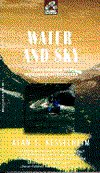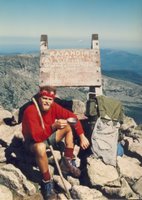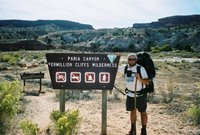
I’ve been doing a variety of readings lately, finishing two books this week. I came across the first,
Water and Sky: Reflections of a Northern Year by Alan Kesselheim, in a museum last December. When I read the cover about them spending a year in northern Canada, I was hooked. One of my lifelong goals is to spend a winter in a northern cabin, something that has intrigued me since reading Bradford Anglier’s book,
At Home in the Woods, as a high school student. With Kesselheim, I was in for a treat. His mastery of language is wonderful. The book describes a river trip he and his partner Marypat took across Northern Canada. Starting at Jasper, Alberta, they paddled northwest on the Athabasca River to Northern Saskatchewan where they wintered in a cabin. The next summer, they continued on, ending up at Baker Lake, deep in the Northwest Territories near the Hudson Bay. Check it out.
The second book sounds morbid. I came across
Patience, Compassion, Hope and  the Christian Art of Dying Well
the Christian Art of Dying Well by Christopher Vogt while searching for information on Ars Moriendi (art of dying), which was a popular genre a couple hundred years ago. Although I enjoyed the book, I don’t know if I’d recommend it (unless you have an interest in Reformation era theologians or the changes in the way we die over the past several hundred years or ethics around the issue of death). This book reads like an excerpt from Vogt’s dissertation, which makes it a little dry. Vogt is a lay Catholic theologian.
I am currently reading Mark Kurlansky's,
1968: The Year that Rocked the World. So far, I'm enjoying it. I'm also enjoying listening to Robert Pirsig's
Zen and the Art of Motorcycle Maintenance. I'd read this book in college, nearly 25 years ago and it's good to regain familarity with it. I listen to it when in the gym, unless of course I'm swimming.

Last night, I finally got around to watching "The Scent of the Green Papaya," a Vietnamese film from 1993. The film that is about a young girl (she is 10 at the beginning of the movie) who experiences through the senses, the beauty and uniqueness of the world. There is no plot, but the movie is beautifully filmed and the sounds of crickets at night were so realistic that my dog keep waking up and looking at the television. It’s still a little early for such insects. I liked the way she prepared the papaya, by striking it with a knife long-ways, then shaving off noodle like pieces. There is little dialogue in the movie, the lines that are there are in Vietnamese which mean I had to read the subtitles. But since there was little talking, I got to starch a dozen shirts, catching up on my laundry, while watching the film.
Tonight we finished the fourth puzzle of the winter. It has puppies all over it (what can I say, my daughter picked it out) and looked to be easy. Looks can be deceiving and it was with this one. Now that days are getting longer and Daylight Saving Time takes effect on Sunday, we’ve at the end of puzzle season.
I'm now so sleepy, I'll need to come back tomorrow and edit this.







